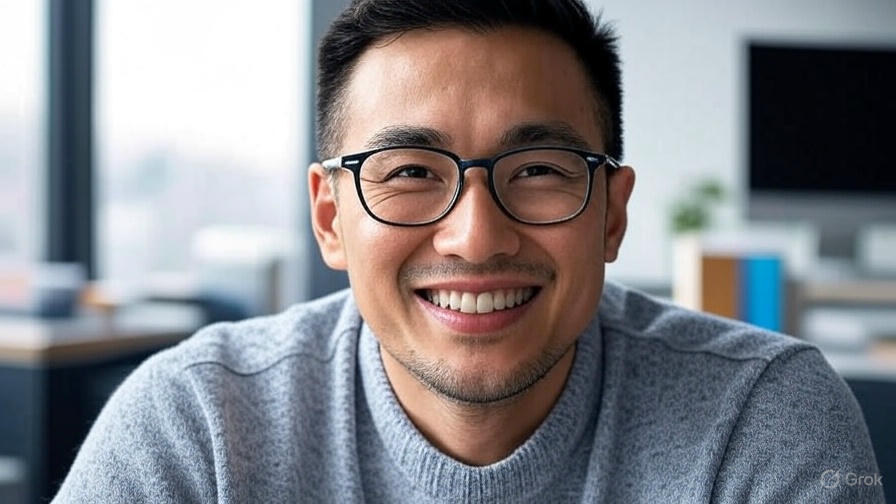Starting a blog feels a lot like standing at the edge of a diving board for the first time. You’re excited, a little nervous, and honestly… you’re not entirely sure how deep the water is. Been there, done that, got the metaphorical T-shirt.
When I started my first blog, I had no clue what I was doing. My headlines were meh, my sentences went on forever, and let’s not even talk about SEO. But hey, I’ve learned a thing or ten since then—and I’m about to spill the tea. ☕
So grab your favorite snack (mine’s popcorn with too much butter), and let’s dive into the top 10 content writing tips for blogs that’ll turn your beginner blunders into blogger brilliance.
1. Know Your Audience Like You Know Your BFF
Picture this: you’re telling a juicy story. Who are you telling it to? Your grandma or your bestie? Exactly. The way you talk changes based on who’s listening.
The same goes for blogging. Are your readers teens into skincare? Busy moms looking for budgeting hacks? Tech nerds who drool over the latest gadgets?
👉 Create reader personas. Think: age, interests, problems, favorite memes—the works.
Pro Tip: Stalk (in a non-creepy way) Reddit threads, Quora, or Facebook groups in your niche. That’s where your audience hangs out and rants. Pure gold.
2. Start With a Bang: Nail That Headline
Let’s be real—if your headline’s boring, no one’s clicking. It’s like trying to sell stale bread at a bakery.
Use power words, numbers, curiosity, or controversy. Think:
- “10 Mind-Blowing Facts About Skincare You Never Knew”
- “Why Every Freelancer Is Making This Huge Mistake”
Test different styles. There’s no one-size-fits-all. Sometimes emojis work. Sometimes, mystery wins.
By the way, tools like CoSchedule Headline Analyzer or Sharethrough can help you craft click-worthy titles.
3. Hook ‘Em in the Intro (No Fishing Pole Required)
You’ve got maybe 5 seconds before your reader bounces. Your intro has to grip like Gorilla Glue.
Start with a question, a wild stat, or a relatable story (embarrassing moments work wonders).
Example: “I once published a blog post with zero headings, no images, and a paragraph longer than my grocery list. The result? Crickets.”
Set the tone, tease the value, and keep it snappy.
4. Keep Paragraphs Shorter Than a TikTok Video
Big walls of text? Ain’t nobody got time for that.
Write in short bursts—2 to 3 sentences max. It’s easier on the eyes and keeps mobile readers from rage-quitting.
Break it up with subheadings, bullet points, quotes, and images. White space is your BFF.
5. SEO Is Your Invisible Best Friend (Use It Wisely)
Okay, real talk—SEO isn’t about stuffing your blog with keywords like a Thanksgiving turkey. It’s about being found organically.
Here’s the lowdown:
- Use your main keyword naturally in the title, first 100 words, and subheadings.
- Sprinkle LSI keywords (like synonyms and related terms).
- Add internal links (to your own content) and external links (to credible sources).
Bonus Tip: Use tools like Ubersuggest or Ahrefs to spy on what’s trending.
6. Talk Like a Human, Not a Textbook
People don’t want a lecture—they want a conversation.
Use contractions, everyday language, and sprinkle in some humor. Don’t be afraid to let your personality shine through.
Instead of: “Utilize this methodology to maximize productivity.” Try: “Use this trick to get more done without losing your mind.”
It’s like talking to a friend, not writing a thesis.

7. Add Value Like You’re Oprah Handing Out Free Cars
Every blog post should answer a question, solve a problem, or make the reader’s life a teeny bit better.
Ask yourself: What’s the takeaway here?
Give actionable tips, real examples, templates, or checklists. Don’t just talk about a problem—guide them through the solution.
Think: teacher + cheerleader + life coach = value-packed blogger.
8. Edit Like Your Blog’s Reputation Depends on It (Because It Does)
First drafts are ugly. That’s just facts.
Always revise. Check for grammar, clarity, flow, and fluff. Tools like Grammarly or Hemingway Editor are lifesavers.
Read it aloud. If you trip over your words, so will your reader.
And for heaven’s sake, fix typos. One wrong “your/you’re” and the grammar police will come for you.
9. Tell Stories That Make People Care
Humans are wired for stories. We remember emotions, not bullet points.
So share that time your blog flopped—or your first $10 from affiliate links. Use metaphors, analogies, or funny life lessons.
It builds connection and trust. Like, “Hey, I’ve been in your shoes. Here’s how I got out of the quicksand.”
10. Always End With a CTA—Because Readers Need Directions
Wanna know why some blogs leave you hanging like a bad date? No call-to-action.
Tell your readers what to do next:
- Leave a comment
- Share the post
- Download a freebie
- Check out a related article
It keeps them engaged and builds community.
Example: “Which tip hit home for you? Drop it in the comments—I read every single one!”
FAQs: Quick Answers for Quick Wins
Q: How long should my blog post be?
A: Aim for 1,500–3,000 words for SEO-rich posts, but always prioritize quality over quantity.
Q: How often should I post?
A: Consistency matters more than frequency. Once a week is a solid start.
Q: Do I need to be an expert to start a blog?
A: Nope! Just be honest, do your research, and speak from experience.
Q: Can I use AI tools for content writing?
A: Absolutely—as long as you personalize, fact-check, and humanize the output.
Final Thoughts (And a Virtual High-Five)
Content writing isn’t rocket science—it’s more like baking. Start with a solid recipe, tweak as you go, and don’t be afraid to add sprinkles.
Whether you’re blogging about pet parrots or passive income, the key is to write like you care. Because when you care, your readers do too.
So, which tip are you gonna try first? Comment below and let’s geek out over blog stuff together. 👇
And hey—if this helped, share it with a fellow beginner. Sharing is caring, remember?
Happy blogging, you legend! ✨








